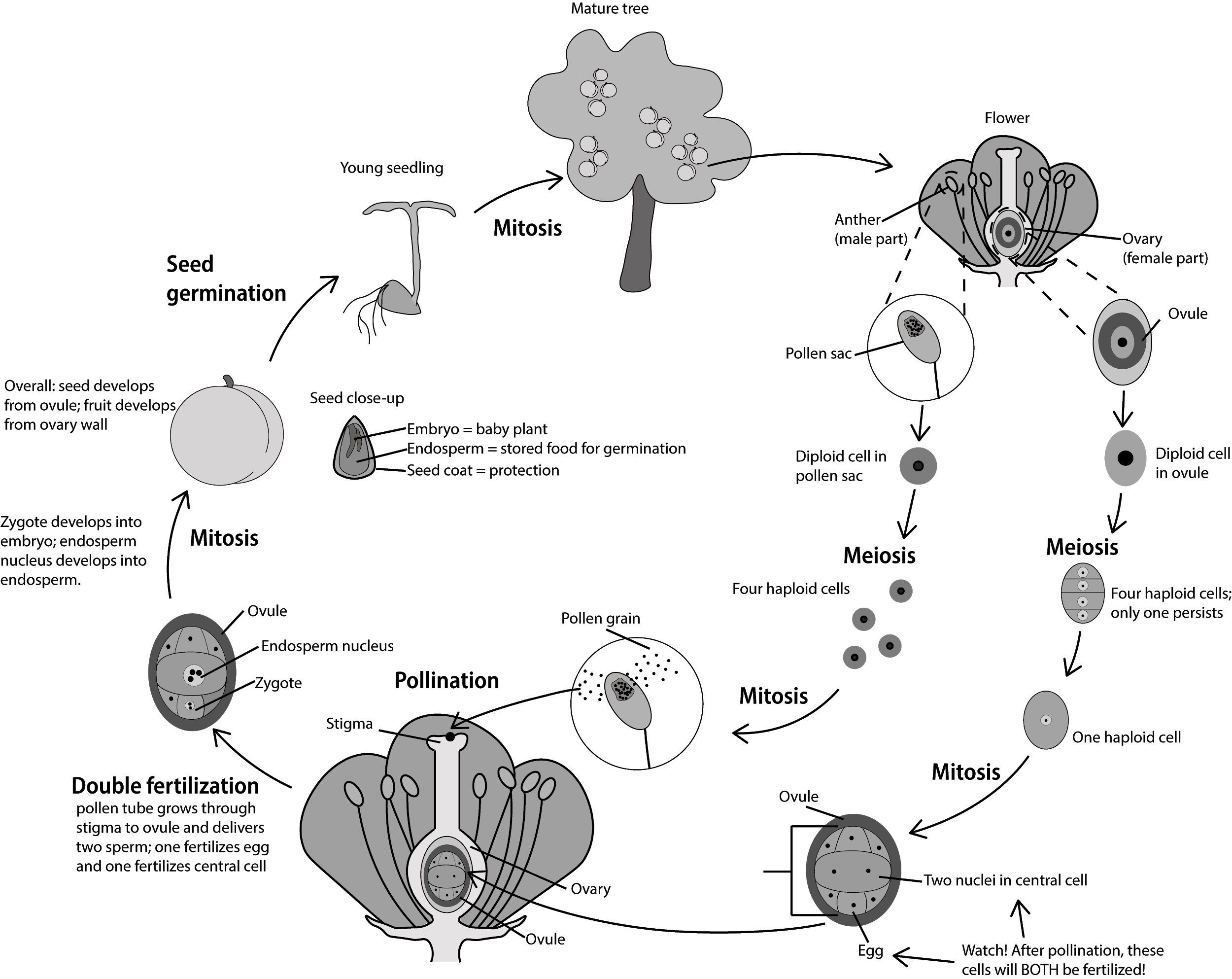
Draw a diagram that illustrates the life cycle of flowering plants. Why don't flowering plants require a source of outside water for pollination?
Answer
455.4k+ views
Hint: Angiosperms are also known as the flowering plants. These are the seed bearing plants. They are the diverse plants which are found abundantly on earth. They belong to the Plantae kingdom. Sporophytic generation is known to dominate their life cycle.
Complete answer:
The sporophytic plants bear flowers consisting of both male as well as female reproductive organs. Production of sperms occurs through male gametophyte within the pollen grain. On the other hand, eggs are produced from the female gametophytes inside the ovaries. Production of both sperms as well as eggs takes place by the process of meiosis. Pollination occurs via wind or insects resulting in double fertilization of the flower. This results in delivery of the sperms to the egg thus forming the zygote inside the ovule present in the ovary. Development of embryos from this zygote takes place inside a seed formed from ovules. It helps in providing nourishment to the developing embryo. Fruit is developed from the ovary which is surrounding the seed. Pollinators are again attracted towards this fruit thus dispersing their seeds. On germination, these seeds develop into a mature sporophytic plant and the cycle is thus repeated.

Flowering plants don't require a source of outside water for pollination because angiosperms can normally carry out their pollination by wind or insect pollinators.
Note: All the flowering plants consist of petals, sepals, stamens and carpels. Petals display their vibrant colors in order to attract pollinators. However, light and small flowers are generally pollinated through wind pollination.
Complete answer:
The sporophytic plants bear flowers consisting of both male as well as female reproductive organs. Production of sperms occurs through male gametophyte within the pollen grain. On the other hand, eggs are produced from the female gametophytes inside the ovaries. Production of both sperms as well as eggs takes place by the process of meiosis. Pollination occurs via wind or insects resulting in double fertilization of the flower. This results in delivery of the sperms to the egg thus forming the zygote inside the ovule present in the ovary. Development of embryos from this zygote takes place inside a seed formed from ovules. It helps in providing nourishment to the developing embryo. Fruit is developed from the ovary which is surrounding the seed. Pollinators are again attracted towards this fruit thus dispersing their seeds. On germination, these seeds develop into a mature sporophytic plant and the cycle is thus repeated.

Flowering plants don't require a source of outside water for pollination because angiosperms can normally carry out their pollination by wind or insect pollinators.
Note: All the flowering plants consist of petals, sepals, stamens and carpels. Petals display their vibrant colors in order to attract pollinators. However, light and small flowers are generally pollinated through wind pollination.
Recently Updated Pages
Can anyone list 10 advantages and disadvantages of friction

What are the Components of Financial System?

How do you arrange NH4 + BF3 H2O C2H2 in increasing class 11 chemistry CBSE

Is H mCT and q mCT the same thing If so which is more class 11 chemistry CBSE

What are the possible quantum number for the last outermost class 11 chemistry CBSE

Is C2 paramagnetic or diamagnetic class 11 chemistry CBSE

Trending doubts
Which is not a source of freshwater 1 Glaciers and class 11 chemistry CBSE

10 examples of friction in our daily life

The correct order of melting point of 14th group elements class 11 chemistry CBSE

Difference Between Prokaryotic Cells and Eukaryotic Cells

One Metric ton is equal to kg A 10000 B 1000 C 100 class 11 physics CBSE

What is the specific heat capacity of ice water and class 11 physics CBSE




